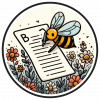What “counts” as open source? And why is that important to biodiversity conservation?
It's great to be one of the three conveners of the WILDLABS Open Source Solutions group along with @Amanda_Matthes and @briannajohns. I've been meaning to make my first post, and I thought it'd be useful to do some scene-setting and share my view on the meaning and importance of open source technologies for conservation. This post draws from an peer-reviewed opinion paper we published in May 2024, please like and cite!
Hsing, P.-Y., Johns, B., & Matthes, A. (2024). Ecology and conservation researchers should adopt open source technologies. Frontiers in Conservation Science, 5. https://doi.org/10.3389/fcosc.2024.1364181
Formal definitions
Contrary to what some may believe, open source software and hardware are not just about publishing something online and not charging for it. Instead, both have widely-adopted formal definitions.
There is the Open Source Definition for software and the Open Source Hardware Definition. To give you a sense of their contents, the Open Source Hardware Definition states that for a piece of tech to be open source, it must be:
...made publicly available so that anyone can study, modify, distribute, make, and sell the design or hardware based on that design.
In my view, these formal definitions boil down to ensuring four fundamental freedoms for users of technology. That is, the freedoms to:
- Use it for any purpose;
- Study how it works;
- Modify and remix it; and
- Share it (including any modifications).
These freedoms might sound abstract, but I believe they are important for scientific research, including conservation science!
There are already WILDLABS-related conservation tech which are open source, such as Mothbox, Fieldkit, OpenCTD, OpenFlexure, or this ongoing thread about developing an open source camera trap.
I have plenty of thoughts on why open source tech is crucial especially for conservation, but I'll put them into upcoming posts.
In the meantime, I would really like to know what members of the WILDLABS members think:
Can you relate to the formal definitions of open source software and hardware? How do they affect the way we do conservation?
Looking forward to your replies!
P.S. Yes, there is a hot-off-the-press Open Source “AI” Definition that was just released this week. I certainly have opinions on it but that's a post for another day.
3 November 2024 12:41pm
Interesting question!
I am coming more with a monitoring and research than a conservation perspective.
I am pretty sure that open source software, changes the way I am able to explore new methods. The ease of access both financially and temporally (by not having to find and allocate funds) makes it much faster to try out new ideas.

Jamie Macaulay
Sea Mammal Research Unit Univ' St Andrews
4 November 2024 10:16am
Interesting topic! Open source is absolutely crucial for science but it's a double edged sword sometimes.
In marine bioacoustics (and more specifically marine mammal bioacoustics) we have done a good job of keeping a decent chunk of software (e.g. PAMGuard, Tethys, Triton, PAMpal) and hardware (e.g. SoundTraps ) open. With lots of researchers collaborating and adding the latest analysis methods to these programs/systems, we have a really powerful set of tools that anyone can use and there are often discussions within the marine bioacoustics community about how this shaped marine bioacoustics, particularly that there is often an expectation now that software and to some extent hardware should be open.
However, there are some significant disadvantages too.
- Open source software comes with no guarantee of support and often user friendliness is not at the forefront for developers. Commercial software can be more accessible to use (once you've bought it).
- It can be incredibly difficult to fund open source software - whilst new features are often possible to get funded, funding the core maintenance can be extremely challenging and feeds into point 1. - more bugs - less support.
- It can sometimes be difficult within biology departments to hire in-house engineering expertise for professional software development.
So yes, 100% agree with you but there are some very practical hurdles to making open source reality which is why, I guess, all software isn't just open!
On a quick side note: I thought that the boring fund was a really good step forward for open development (for example making tutorials, updating graphical user interfaces, addressing bugs, software infrastructure improvements etc.) and hope that sustainable funding streams like that can be more prevalent in the future.
4 November 2024 11:57am
I love open source software. Open source software needs to be supported to survive.
One example of a business model is to make it really popular and when you have large amounts of users then add some kind of app that makes it more usable which you charge a little more. But if it doesn’t get used then this model fails from a support perspective.
Case in point. I developed an open source audio recorder last year that also facilitates sound localization and potentially real-time sound localization by maintaining sub-microsecond clock accuracy. I was actually developing a recorder for a different purpose but then I discovered wildlabs, so I thought I’d make it easy for wildlabbers to use.
I made the installation easier than ever, a whole platform, together with configuration installs with a single command. I extensively documented the installation procedure and usage. I wrote a medium.com article to show in detail how to use it. And I announced it on wildlabs a number of times.
But based on the zero questions I received I’m pretty sure that not a single wildlabs user or anyone in bio-acoustics tried it. A few years ago. When no one could get any chips, bioacoustics people would have been so happy with a Pi based recorder.
If it wasn’t for the fact that in the geek/non bioacoustic world a relatively large number of people have used it and cloned it (got 7 clones, 145 stars) I would have close sourced it. (No idea what they used it for, maybe war). Another project I open sourced, similar fate but even worse because not even the geeks used it. It wasn’t cloned yet, so I did close source this and I’m pursuing various commercial options for it which look promising.
My conclusion is that it’s extremely difficult to get an open source project used and getting it used is the starting point for its life blood. I’ve concluded that without influencers being involved the steps involved in getting open source software used a lot is even more work still.
I think open source software can be supported well when it's developed from groups. Organisations, companies. Then it gets support, because it doesn't necessarily have to be monetary support, "it's great what you are doing" sort of thing. Support that helps with motivation. It's a different situation for lone developers with something to offer.
So in short, without support of some sort, a lot of open source projects will not develop very significantly. We take open source software for granted but perhaps that’s the very problem. From my own perspective as a solo developer (at the moment) I’ve definitely gone off open sourcing software, it can be a very unsatisfying experience.

Tobias Petri
Schäuffelhut Berger GmbH
4 November 2024 12:26pm
This is definitely interesting. As a developer of commercial closed source software (Firetail, GPS/Sensor Analysis) I wanted to bring a different perspective.
As @jamie_mac said above, we can indeed put more resources into our customers' needs, usability and stability. We can also provide a direct channel to our users. For open source projects, support contracts can provide a similar level of service, but they are not usually available for software libraries or smaller applications.
Funding can be a challenge for both open source and closed source software. For example, our project relies on a broad long-term user base, but also custom development and services. The hurdle for users to raise adequate funds is definitely higher than for open source, I second this @Lars_Holst_Hansen .
Still, covering development costs by donations or funding alone is hard: as an example, the boring fund is limited to some 12500$ per project, which would suffice for roughly 3-4 weeks of development, hardly sufficient for a significant step forward.
Say Firetail was open source, the number of qualified developers that would significantly contribute to the complex, large C++ codebase, because they benefit from the project will be limited. in particular within the community that we target (no programming, end users).
Also, many open source projects are tied to few experts who may be available to the project for only a limited time and that need to pursue other academic paths. This can be a crucial bottleneck when keeping non-commercial, OSS projects alive.
I have personally seen several ports/forks that started with the best of intentions but then were discontinued, simply because it was largely an unpaid passion and then required adaptions (Google/Mac/.../Tech stack) would have been too cost-intensive. I am involved in charitable projects as well, but despite their importance it is next to impossible to monetarize them.
One other key aspect is: limited visibility. Visibility is crucial, but it is hard work and in particular social media is "publish or perish" at its extreme.
I am not at all saying that Open Source Software is impossible, but like anything in research actually, we cannot assume it comes for free, just because it is open and there is no price tag attached.
edit: user name links











Lars Holst Hansen
Aarhus University